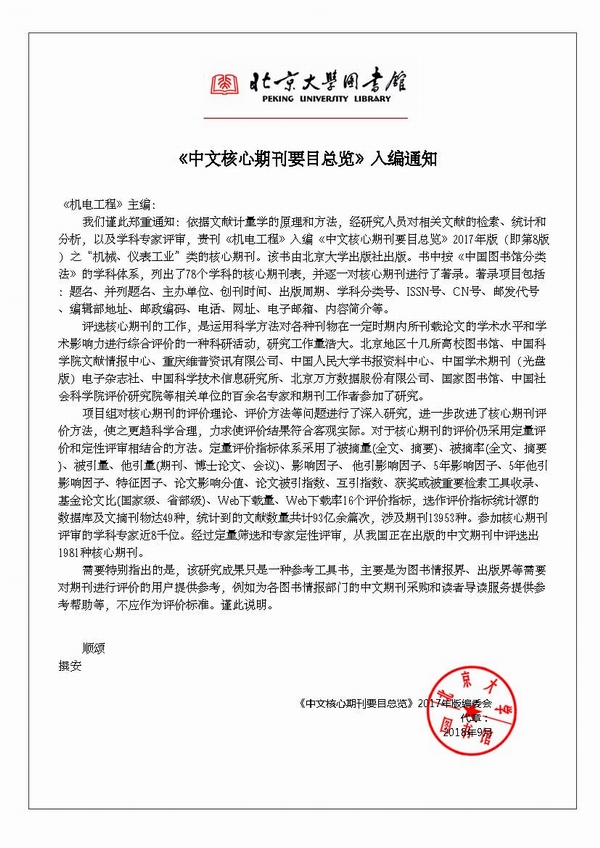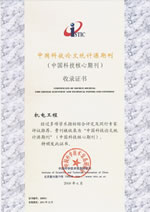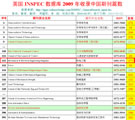
Founded in 1971 >
Chinese Sci-tech Core Periodicals >
British Science Abstracts (SA, INSPEC) Indexed Journals >
United States, Cambridge Scientific Abstract: Technology (CSA: T) Indexed Journals >
United States, Ulrich's Periodicals Directory(UPD)Indexed Journals >
United States, Cambridge Scientific Abstract: Natural Science (CSA: NS) Indexed Journals >
Poland ,Index of Copernicus(IC) Indexed Journals >
International Standard Serial Number:
ISSN 1001-4551
Sponsor:
Zhejiang University;
Zhejiang Machinery and Electrical Group
Edited by:
Editorial of Journal of Mechanical & Electrical Engineering
Chief Editor:
ZHAO Qun
Vice Chief Editor:
TANG ren-zhong,
LUO Xiang-yang
Tel:
86-571-87041360,87239525
Fax:
86-571-87239571
Add:
No.9 Gaoguannong,Daxue Road,Hangzhou,China
P.C:
310009
E-mail:
meem_contribute@163.com
Abstract: Due to the difficulty in predicting the surface roughness of roll grinding and its insufficient prediction accuracy, an intelligent prediction method of rolling surface roughness based on multi-process signals was proposed. Firstly, with the wheel speed, grinding depth, carriage speed and headstock speed as variables, a fullfactor grinding experiment was carried out on the roll, and multi-process signals during the grinding process were collected, namely acoustic emission, vibration and spindle current signals, the surface roughness of the roll after grinding was measured. Then, many eigenvalues of various signals in the time domain and frequency domain were extracted, and feature dimension reduction and fusion were carried out by using principal component analysis (PCA), and various types of feature inputs were constructed. Finally, the multi-layer perceptron (MLP) network was optimized by grid search method, and the prediction model of roughness was obtained, which realizes the intelligent prediction of the surface roughness of roll grinding. The results show that the multi-signal scheme can provide more comprehensive and accurate information than single-signal scheme; the reduced dimensional fusion feature based on PCA can further improve the prediction effect of MLP networks, and the accuracy, F1-score and mean deviation distance are 78.16%, 0.7776 and 0.29 respectively.
Key words: full-factor grinding experiment; acoustic emission signals; grid search method; multi-process signals; reduced dimensional fusion feature; principal component analysis(PCA); multi-layer perception(MLP) networks; prediction model of roughness








